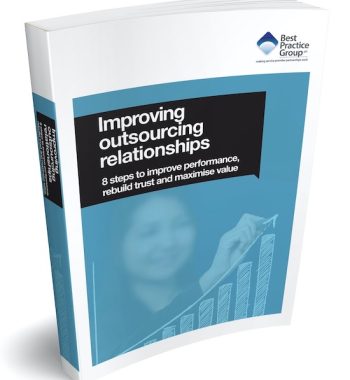 Many local authorities are in dire financial straits. There is an ever-increasing pressure to take a hatchet to costs. They have to invent, experiment and pilot new ways of delivering services in a culture that is extremely averse to risk. Quite the conundrum.
Many local authorities are in dire financial straits. There is an ever-increasing pressure to take a hatchet to costs. They have to invent, experiment and pilot new ways of delivering services in a culture that is extremely averse to risk. Quite the conundrum.
The key is to make the risks of innovation more palatable. So where are the examples of public-to-public shared services that re-invent the wheel and consistently provide positive outcomes?
Bad News…
…there aren’t that many. And the examples that do seem to be successful are limited in scope and seem down to the unique talents of the individuals running them, rather than them having any strong method or process that can provide a framework for others to draw inspiration from.
The thought of trying to engage with multiple officers, councillors of differing political persuasions, and the people on the coalface delivering the services, is considered by many to be a nightmare in waiting. Often, sharing services is the easy part. It is trying to obtain the collaboration and consent of the individuals involved that provides the friction. It all too easily gets shifted onto the “too difficult” pile.
The Solution
There is often a common denominator to help smooth this highly political process – the role of the public-private partnership.
A private partner can help grease the wheels and gain acceptance from different stakeholders at different levels. And most importantly, they can do so without fear of treading on toes that are typically best avoided.
Moreover, the sheer scale of a private sector partner often brings with it an ability to secure a reduction in costs, significant improvements in the quality of service, and wider collaboration in the future.
Having said that, there is a caveat to this solution – the partnership must be set up correctly at its inception. The problem is that many are not.
The Start of a Beautiful Relationship?
There is an old adage that I am particularly fond of – “prevention is the best cure”. When it comes to brokering effective public-private partnerships, no words could be more appropriate. The way in which a partnership is set up typically determines how mutually beneficial it will be in the long run.
A number of typical issues can be avoided by considering the following tips.
1. Set Your Stall Out
There is a big difference between strategic and commercial partnerships. You need to be clear up front about what type of partnership you are aiming for, and why.
2. Be Adaptable
There is only one consistent element in any long term partnership – change. Any commercial framework you put in place must have the ability to handle change – anything less will eventually result in a faltering relationship.
More specifically, there needs to be an understanding of the expectations of change. The private sector partner must have a good understanding of how revenue streams and service provisions might be affected in the future.
3. Consider Less Tangible Results
Effective partnerships often don’t focus solely on the bottom line. Many also focus on the Social Return On Investment (SROI) – beneficial outcomes that extend beyond the financial. Examples include better health outcomes, less children living below the poverty line, and so on.
Before moving forwards with a partnership, consider whether you have identified appropriate SROI measurements, so that your private sector partner can deliver appropriately.
4. Establish Independence at the Helm
It is vital that the chair of the governance board should not be from any of the local authorities or private sector partners involved in a shared service agreement. Why? Because strategic decision making is far more likely to be approached without bias or political influence with an independent chair. And even when it can’t, an independent chair can ask awkward questions and thoroughly consider difficult decisions which might otherwise be avoided.
5. Be Realistic
Always make sure that your performance measurements reflect the starting outcomes and the journey that has been travelled to the current outcomes. Don’t get confused between the rhetoric of “output” based measurements that cloak themselves as “outcome” based measurements.
Share Your Vision
In simple terms, the above can be achieved through a shared vision between public and private sector partners, in a public-private partnership relationship that is established with a mutually beneficial outcome in mind.
It is a shame that public to public partnerships find it so hard to collaborate and share best practice amongst themselves. If they could, they could keep the savings they generate for themselves, rather than having to share the majority with a private sector partner.
Creative Commons image courtesy of o5com

